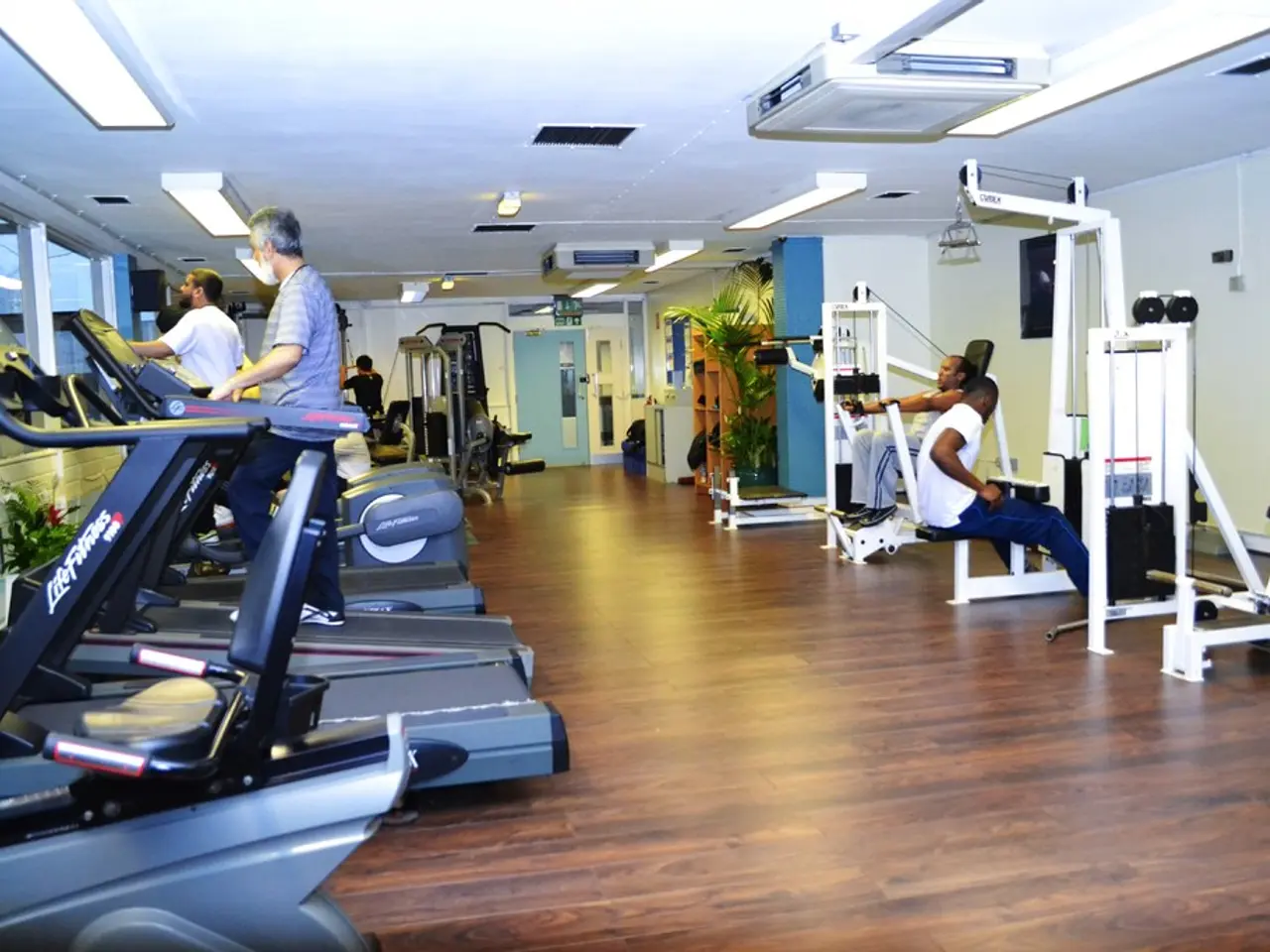Home Muscle Building Without Leaving Home: Sculpt Your Body with a 5-Move Resistance Band Exercise Routine
Resistance bands have become a popular choice for fitness enthusiasts looking to strengthen their muscles and improve their endurance. In a recent study, participants were found to add an average of 6kg to their lifts after eight weeks of resistance band training.
These versatile bands can help improve strength in various exercises such as squats, bench presses, bicep curls, and even hip thrusts. For instance, during hip thrusts, one should lie on the ground, place a resistance band above the knees, push through the heels, and press the glutes up to the ceiling. Moving slowly helps keep muscles under tension a little longer, making the exercise more challenging.
Each exercise in the workout has a specified number of reps and a rest period of 20 to 30 seconds between each exercise. The workout below requires a small loop resistance band and aims to activate muscles, improve muscular endurance, and raise heart rate. It includes five resistance band moves: squats, side steps, lunges, tricep pushdowns, and hip thrusts.
Resistance bands offer several benefits over traditional weights. They provide continuous tension throughout the entire range of motion, unlike free weights that only offer a constant load when gravity acts. This continuous tension helps activate stabilizer muscles for enhanced balance, coordination, and joint stability.
Moreover, resistance bands are scalable, meaning the tension can be increased with thicker bands or doubled bands for overload. This scalability makes them suitable for beginners and advanced fitness enthusiasts alike. X heavy bands provide maximum resistance for advanced strength and muscular endurance training, while lighter bands are excellent for beginners and mobility work.
Resistance bands are also portable and versatile, making them ideal for consistent training anywhere. They support injury prevention and rehabilitation due to their low impact on joints, making them a popular choice for those recovering from injuries or those looking to workout at home.
In summary, resistance bands can help you build strength and endurance safely and effectively. Choose a set of resistance bands that includes a range of resistances—such as light for warm-ups/mobility and extra heavy for advanced strength work—and use them for comprehensive, progressive full-body workouts involving compound and isolation exercises. For best results, start with a resistance level appropriate to your current fitness, progressively increase resistance over time, and incorporate multi-joint movements targeting all major muscle groups.
- To ensure a comprehensive fitness routine, one can incorporate health-and-wellness practices like resistance band training into their workout routine, as these bands offer benefits not only for muscle strengthening and endurance improvement but also for activating stabilizer muscles for enhanced balance and joint stability.
- Embarking on a science-backed health-and-wellness journey, you may find that integrating fitness-and-exercise activities such as squats, lunges, and hip thrusts using resistance bands helps raise your heart rate, build strength, and improve muscular endurance, offering a portable and versatile workout solution suitable for all fitness levels.




